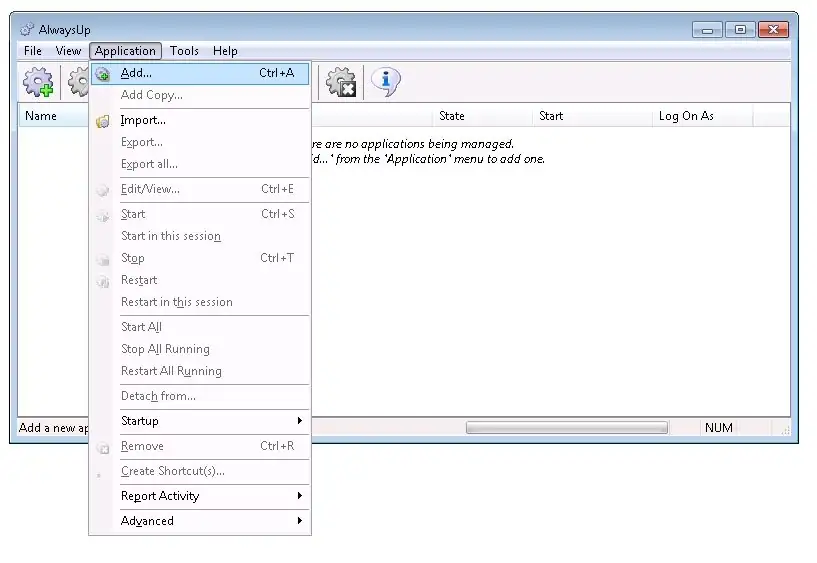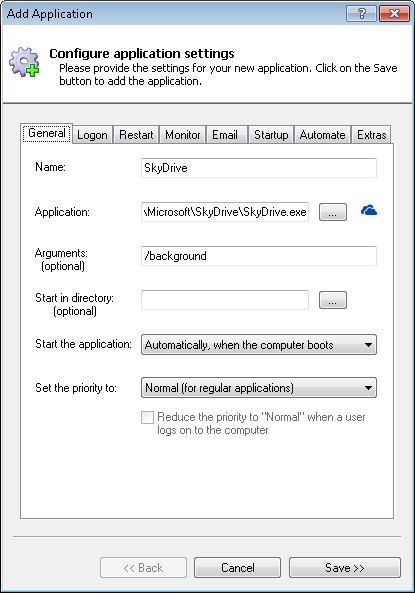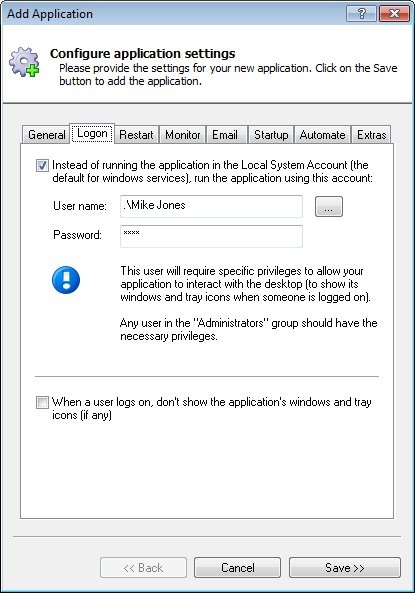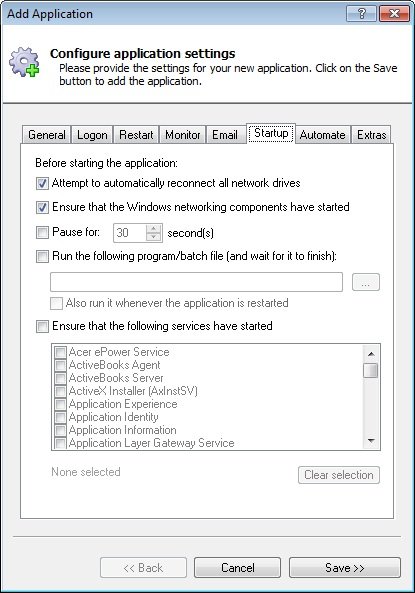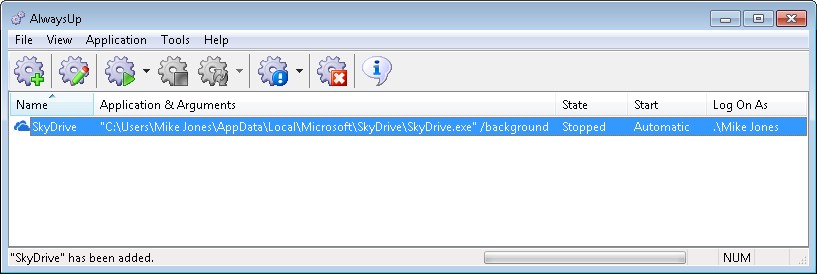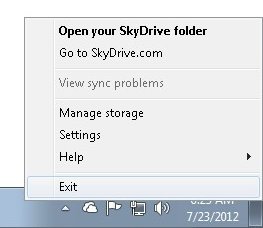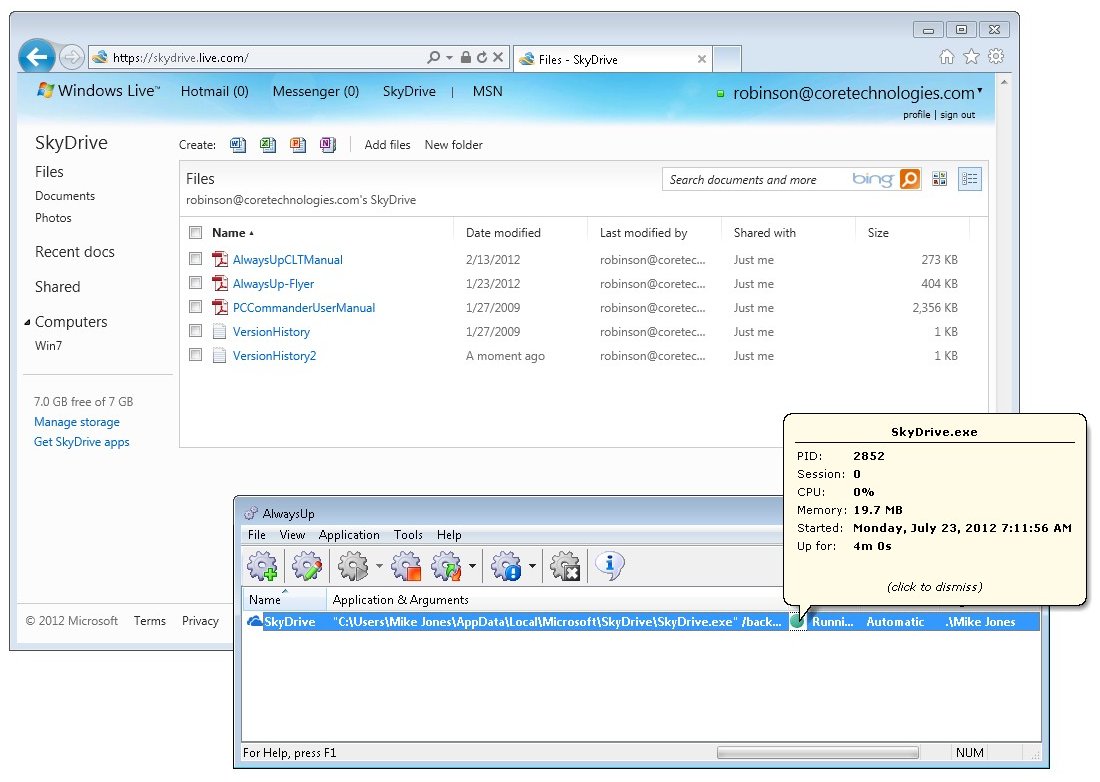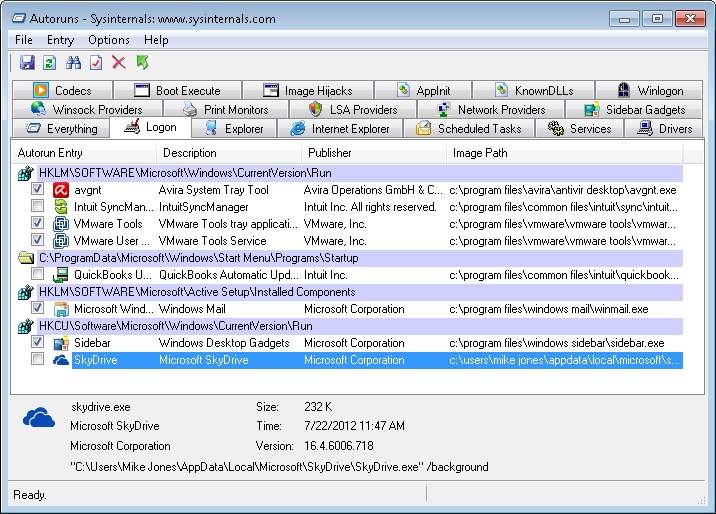-
Download and install AlwaysUp, if necessary.
-
Download and install the SkyDrive desktop client, if necessary.
Please make a note of where you installed it as this will be used in a later step.
-
Start AlwaysUp.
-
Select Application > Add to open the Add Application window:
-
On the General tab:
-
In the Application field, enter the full path to the SkyDrive executable, SkyDrive.exe.
If you installed SkyDrive in the default location, this is:
C:\Users\<USER-NAME>\AppData\Local\Microsoft\SkyDrive\SkyDrive.exe
where <USER-NAME> is the name of the Windows account where you installed SkyDrive.
-
In the Arguments field, enter /background to signal that we want SkyDrive to run unattended in the background.
Without this, SkyDrive may open your folder in Explorer when it starts.
-
In the Name field, enter the name that you will call the application in AlwaysUp.
We have typed in SkyDrive but you can specify virtually anything you like.
-
Click over to the Logon tab and enter the user name and password of the Windows account in which you installed and configured SkyDrive.
SkyDrive must run in this account so that it can find its settings.
-
Click over to the Startup tab and check the Ensure that the Windows Networking components have started box.
This informs AlwaysUp that SkyDrive needs TCP/IP networking support to do its work.
-
Click the Save button. In a couple of seconds, an application called SkyDrive will show up in the AlwaysUp window.
It is not yet running though.
-
Before we start SkyDrive as a Windows Service, we must stop any existing instance. If SkyDrive is running, stop it now by right-clicking on the tray icon
( )
and choosing Exit.
)
and choosing Exit.
-
To start SkyDrive from AlwaysUp choose Application > Start "SkyDrive". Note that you won't see SkyDrive's icon in the task bar (nor will you see the nice icons in your SkyDrive folder) because
SkyDrive is running in the background, but your files will be synchronized.
On Windows 7, 2008 or Vista (or when connecting via RDP), you can choose Application > Start "SkyDrive" in this Session if you wish to show SkyDrive's tray icon.
(More on this in the AlwaysUp Frequently Asked Questions.)
-
Now that SkyDrive will always be running 24x7 in the background, there is no need to start it again when you log on. We recommend using the
free Autoruns tool from Microsoft to disable SkyDrive's auto-start but any "startup manager" should do the trick.
With Autoruns, click over to the Logon tab and un-check the box beside the SkyDrive entry:
-
That's it! Next time your computer boots, SkyDrive will start up immediately, before anyone logs on.
We encourage you to edit the entry in AlwaysUp and check out the many other settings that may be appropriate for your environment.

